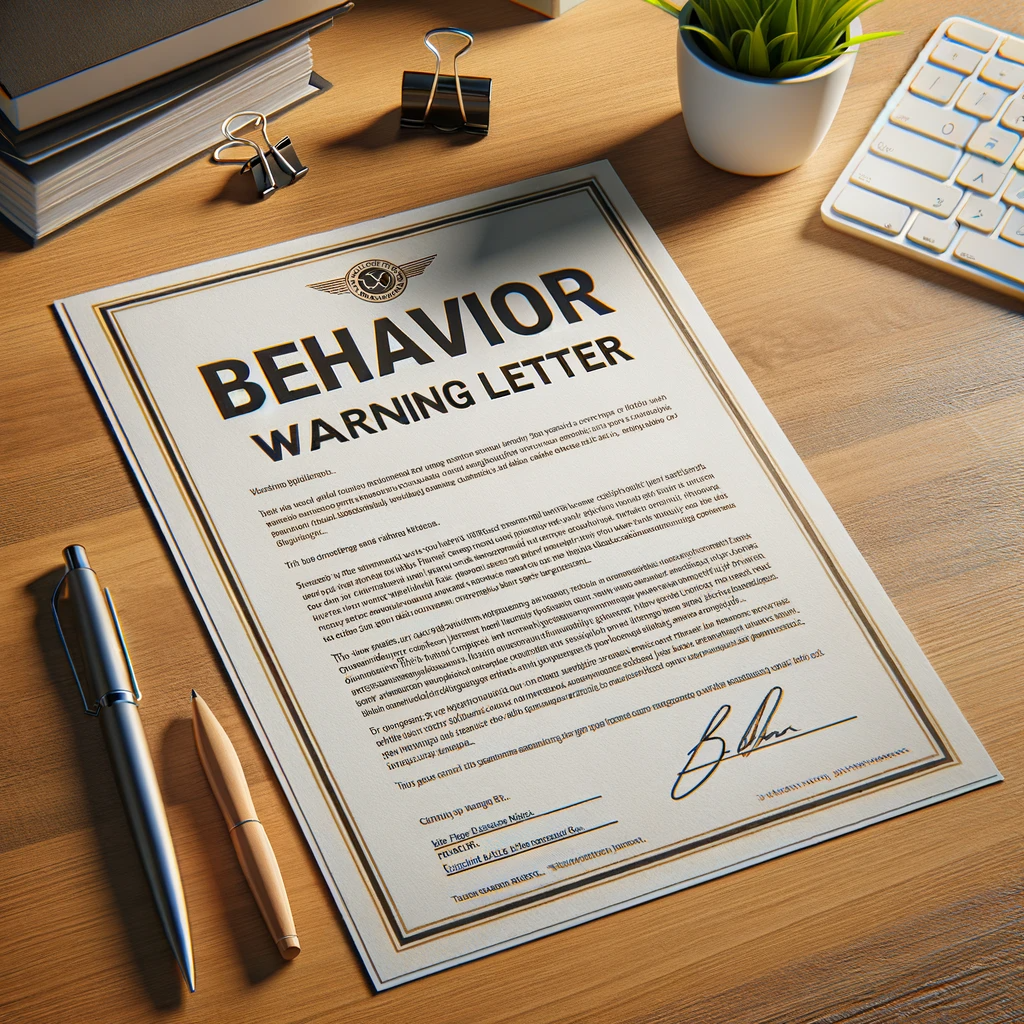Introduction
In terms of managing workplaces, addressing issues with employee behavior is a task that requires professionalism, tact and compassion. A constructive behaviour warning letter is an essential tool for managing the problems. It’s more than just a tool to discipline, but also a chance to direct employees back to the right track. This article will discuss efficient methods of writing and sending these letters.
Understanding the purpose
A behaviour warning letter has multiple functions It formally addresses behaviors that are problematic, establishes clearly defined expectations, and sets out the consequences for not improving. It isn’t intended to undermine morale but rather to help the employee to understand and correct their behavior.
Be Specific And Precise
Begin by describing the particular behavior that is problematic. Avoid vague statements; instead, use concrete examples. For example, instead of telling the employee, “Your behavior is disruptive,” specify the behavior like “Your noisy conversations in the workplace have caused a distraction to your coworkers.”
Reference To The Company Policy
Connect the behavior to the company’s policy as well as the code of conduct. This ensures that expectations aren’t random, but rooted in the standards of the company. For instance, “As per our company’s code of conduct, maintaining a safe working environment is crucial. …”
Focus On Impact
The behavior should be highlighted in a way that can affect the working environment, or the company’s goals. This helps the employee comprehend the larger consequences for their behavior. For instance, “Your frequent tardiness has caused disruption to meeting schedules and team meetings.”
Visit Story: Behavior Issue Warning Letter
Offer Support And Resources
An employee’s behaviour warning letter notice must include resources and support to assist the employee to improve. This could include providing counseling, training or a specific action plan. For instance, “We are here to assist you and provide access to training in time management to improve your attendance.”
Create Clear Expectations And The Consequences
Clarify what should be expected going forward and the consequences of failing to meet the expectations. This will help avoid miscommunications and make employees aware of the severity that the problem is. For instance, “We expect an immediate improvement in your punctuality. If you don’t do this, it could cause further disciplinary action as well as dismissal.”
Keep A Professional Tone
Your tone in the letter must remain professional, respectful and polite. Avoid emotional remarks or personal critiques. The primary focus should be on the actions and not on the individual.
Encourage Dialog
Encourage the person to talk about the issue in more detail. This is a sign that you are willing to consider the perspective of your employee and are willing to aid in their growth. For instance, “We value your contribution to the team and would love to discuss ways in which we can assist you in your growth within this field.”
Document And Follow-Up
Documentation is vital. Keep the original letter to keep for your records and follow-up with regards to the incident. The employee’s behavior following the letter can help assess progress and helps ensure accountability.
Behavior warning letters can vary depending on the nature of the behavior, the workplace environment, and the specific policies of an organization. However, they generally fall into several broad categories:
- Performance-Related Warning Letters: These are issued when an employee’s work performance does not meet the company’s standards. They may address issues like missed deadlines, poor work quality, or failure to meet targets.
- Attendance-Related Warning Letters: These letters are sent in cases of excessive tardiness, unexplained absences, or frequent sick leaves without proper documentation. They address the impact of the employee’s absence on the team and the overall workflow.
- Conduct-Related Warning Letters: These pertain to behavioral issues in the workplace, such as inappropriate language, harassment, bullying, or violation of company policies. These letters often emphasize the importance of maintaining a professional and respectful work environment.
- Safety-Related Warning Letters: Issued when an employee fails to adhere to safety protocols. This type of letter is crucial in industries where safety is paramount, like construction, manufacturing, or healthcare.
- Ethics and Compliance-Related Warning Letters: These are necessary when an employee violates ethical standards or legal compliances, such as engaging in fraudulent activities, corruption, or breach of confidentiality.
- Progressive Discipline Warning Letters: Used in a progressive discipline policy, these letters follow a structured approach where the severity of the warning escalates if the behavior does not improve. The first letter might be a verbal warning, followed by written warnings, and could lead to termination if the behavior persists.
- Customer Complaint-Related Warning Letters: Sent when there is a serious customer complaint against an employee. This could involve rudeness, incompetence, or negligence in dealing with customers.
- Substance Abuse Warning Letters: Address issues related to the use of alcohol or drugs in the workplace or coming to work under the influence.
The Conclusion
A constructive behaviour warning letter is an artful blend of the addressing of problematic behavior and encouraging an employee’s progress. By being precise, relating to the company’s policy, highlighting the importance of the incident, offering assistance and high standards, ensuring an expert tone, encouraging conversations, and recording the process, managers are able to effectively make use of the letters to help to bring about positive changes.

